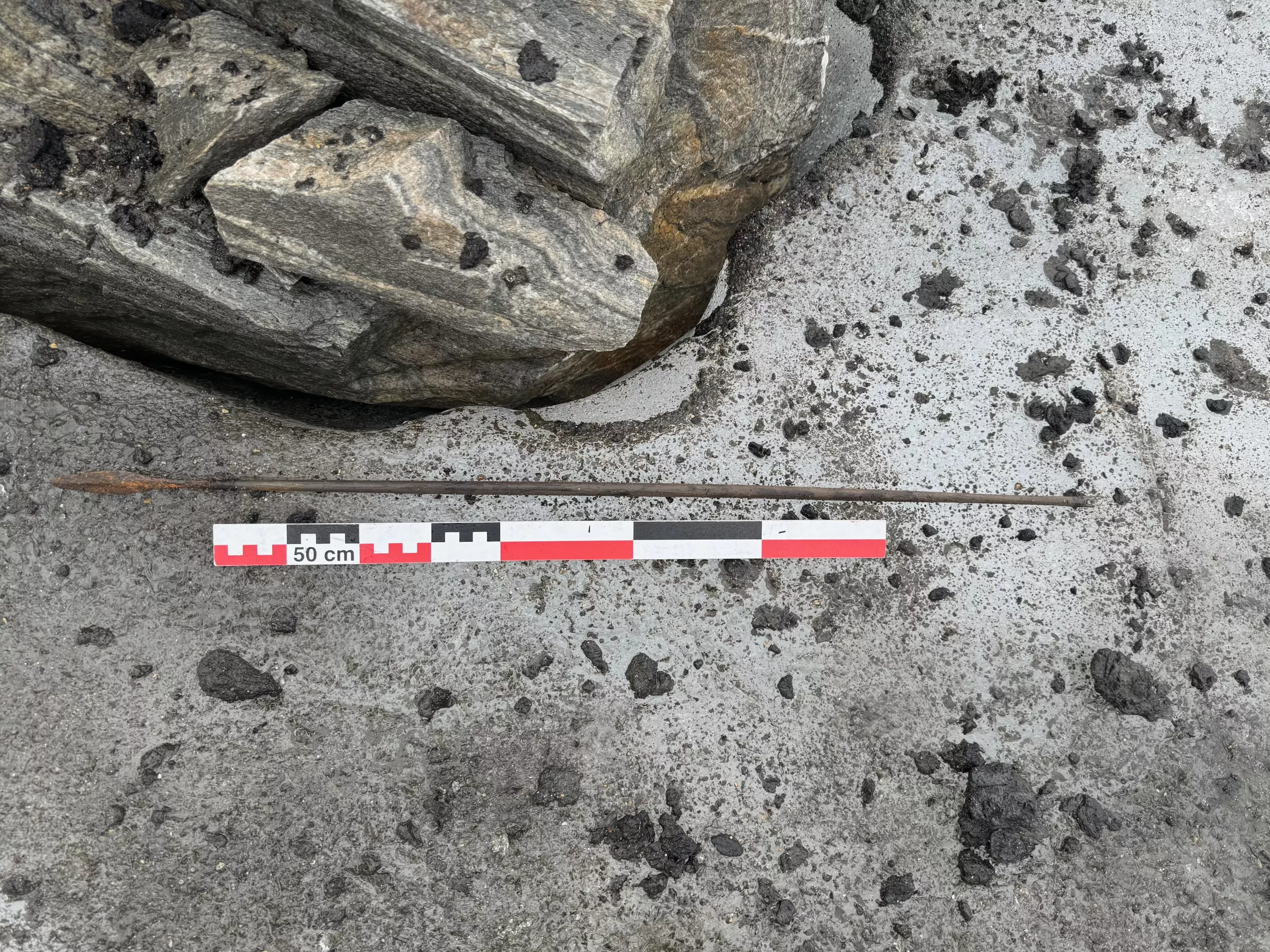Introduction
In an extraordinary archaeological discovery, a 1,300-year-old arrow was recently found lying on the surface of a melting ice patch in Norway’s Innlandet region. Perfectly preserved since the day it was lost, this artifact offers a rare glimpse into the past, revealing not only ancient craftsmanship but also a broader narrative of life during that era. This discovery is part of the larger Glacier Archaeology Program, which has uncovered over 3,000 artifacts from melting ice patches, offering unique insights into life thousands of years ago.
Preservation Against Time: A Near-Complete Arrow
The arrow, incredibly well-preserved, still retains its iron arrowhead, sinew binding, and wooden shaft. Only the fletching—the feathers at the rear used for stabilization—is missing, though a faint imprint of it remains. The survival of organic materials like sinew is particularly remarkable, given that such materials usually degrade quickly. The cold conditions of the glacier helped to preserve this ancient hunting tool in an almost pristine state, offering an authentic look at its craftsmanship.

Historical Context: A Frozen Glimpse Into the Past
This arrow likely dates back to the Viking or Merovingian periods, between 600 and 1,300 years ago. The artifact reflects the skills and knowledge of ancient hunters who lived in harsh, high-altitude environments. It also underscores the significance of hunting in their daily lives, particularly in areas like Innlandet, where reindeer hunting was common. The tools found in this region, including this arrow, serve as evidence of the sophisticated methods ancient peoples used to survive in extreme conditions.

The Role of the Glacier Archaeology Program
The arrow is part of a larger body of work by the Glacier Archaeology Program, an initiative that has gained momentum in recent years due to climate change. As global temperatures rise and glaciers recede, ancient artifacts that were once encased in ice are now being uncovered. Over 3,000 objects have been discovered, including hunting gear, clothing, shoes, and other tools that offer a comprehensive view of ancient life. These finds span over 6,000 years of history, demonstrating a continuum of human interaction with the landscape over millennia.

Impact of Climate Change on Archaeology
The discovery of this arrow and other artifacts is a direct consequence of the melting ice caused by climate change. While these finds provide valuable historical information, they also serve as a stark reminder of the environmental changes happening today. Glaciers are natural preservers, freezing objects in time. As they melt, these artifacts are exposed, allowing archaeologists to study them, but this also marks the loss of ancient ecosystems and the environments that kept these objects intact for so long.

Conclusion: Bridging Past and Present
The discovery of the 1,300-year-old arrow is not just an isolated find but part of a broader narrative that connects us to our ancestors. It reflects the ingenuity of early peoples and their deep connection to the natural world. As the ice continues to melt, more secrets from the past are likely to emerge, potentially changing our understanding of ancient civilizations. However, these finds also come with a sense of urgency, as they are a reminder of the ongoing impacts of climate change on both the environment and historical preservation.

